Make no mistake, if you are undecided where to go for your next golfing holiday or extended weekend away with a group of friends, put Tasmania at the top of your list.
Tasmania is a great place to visit and play golf, a fact that was rewarded at the 2015 International Association of Golf Tour Operators (IAGTO) awards when Tasmania was named the ‘Undiscovered Golf Destination of the Year’– an award voted on by more than 200 of the world’s leading golf travel journalists from across the planet.
Tasmania, where any golfer can play Top-100 world-ranked courses, snared the award in front of 60 other nominated destinations from around the world, with judges basing their decision on the extent of which the golfing destination is undiscovered, attractiveness of the region and courses, speed of play, climate and accessibility.
You had better hurry though, because the secret is out. And, if you’re still not convinced, here are 14 reasons to book your trip ASAP.
1. KING ISLAND WONDERS
The opening of Cape Wickham Links and Ocean Dunes a handful of years ago has put King Island on the world golfing map.
Any golfer who has ever experienced hot golf destinations like California’s Monterrey Peninsula, Bandon Dunes on the Oregon coast, the south west of Ireland or the great Scottish links, will be impressed by these wonder courses.
Cape Wickham (pictured above) has been entrenched in the top-five ranked courses in Australia since it opened and is one of the country’s most photographed layouts.
Designed by American Mike DeVries in collaboration with Darius Oliver, Cape Wickham easily realises the great expectations of what was anticipated from such a wonderful piece of golfing land on the island’s north-west tip.
It is an outstanding routing, which features eight holes set right alongside the jagged coastline and another two where any approach shot is played toward an ocean backdrop. You can see Bass Strait from every hole. Some holes sit high above the sea, on others you can almost feel the sea spray as you peg your ball on the tee.
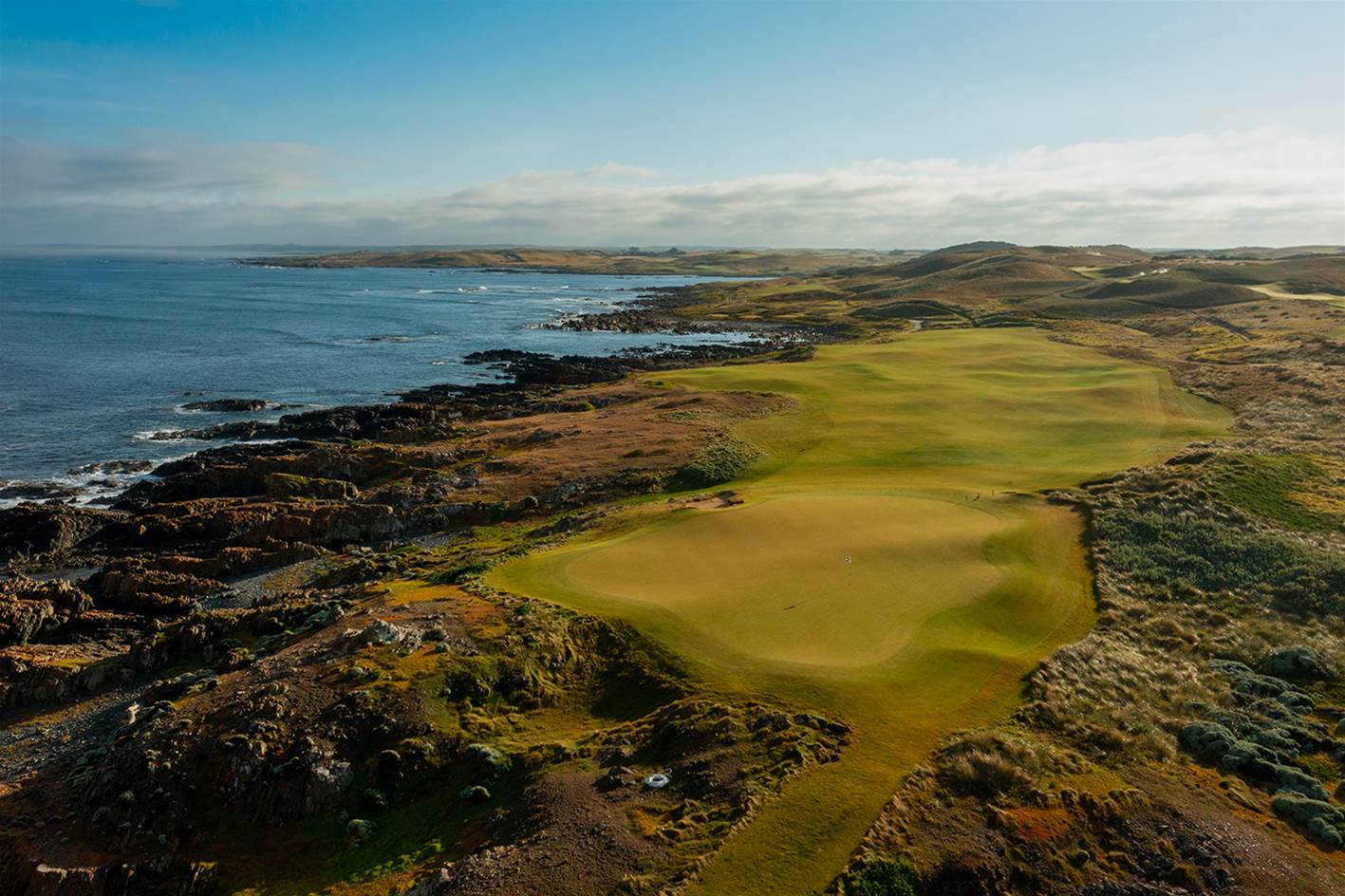
Ocean Dunes, located just north of Currie and less than five minutes’ drive from King Island airport, covers dramatic golfing terrain with fairways that roll and weave between sand dunes, with several holes laid alongside its two-kilometre stretch of ocean frontage.
Designed by Graeme Grant, the spectacular layout has plenty of highlights but one of the most memorable and talked about holes is the 130-metre par-3 4th hole, which is played across an ocean inlet with rocky edges on both sides of the water. The tee is perched just above the waves, while the expansive putting surface is very wide and features a bunker cut into the middle of the front edge.
And don’t forget the isle’s original layout – the King Island Golf & Bowling Club, which is a superb nine-hole seaside course just south of Currie’s main street that was recently named one of the best nine-hole or ‘short’ courses in the world by an American golf magazine.
2. BARNBOUGLE
No golfing trip to Tasmania is complete without a visit to Barnbougle and its three courses – Dunes, Lost Farm and the new short course, Bougle Run.
Barnbougle Dunes put Tasmania on the international golfing map when it opened for play in 2004 and was immediately ranked one of the best courses in Australia.
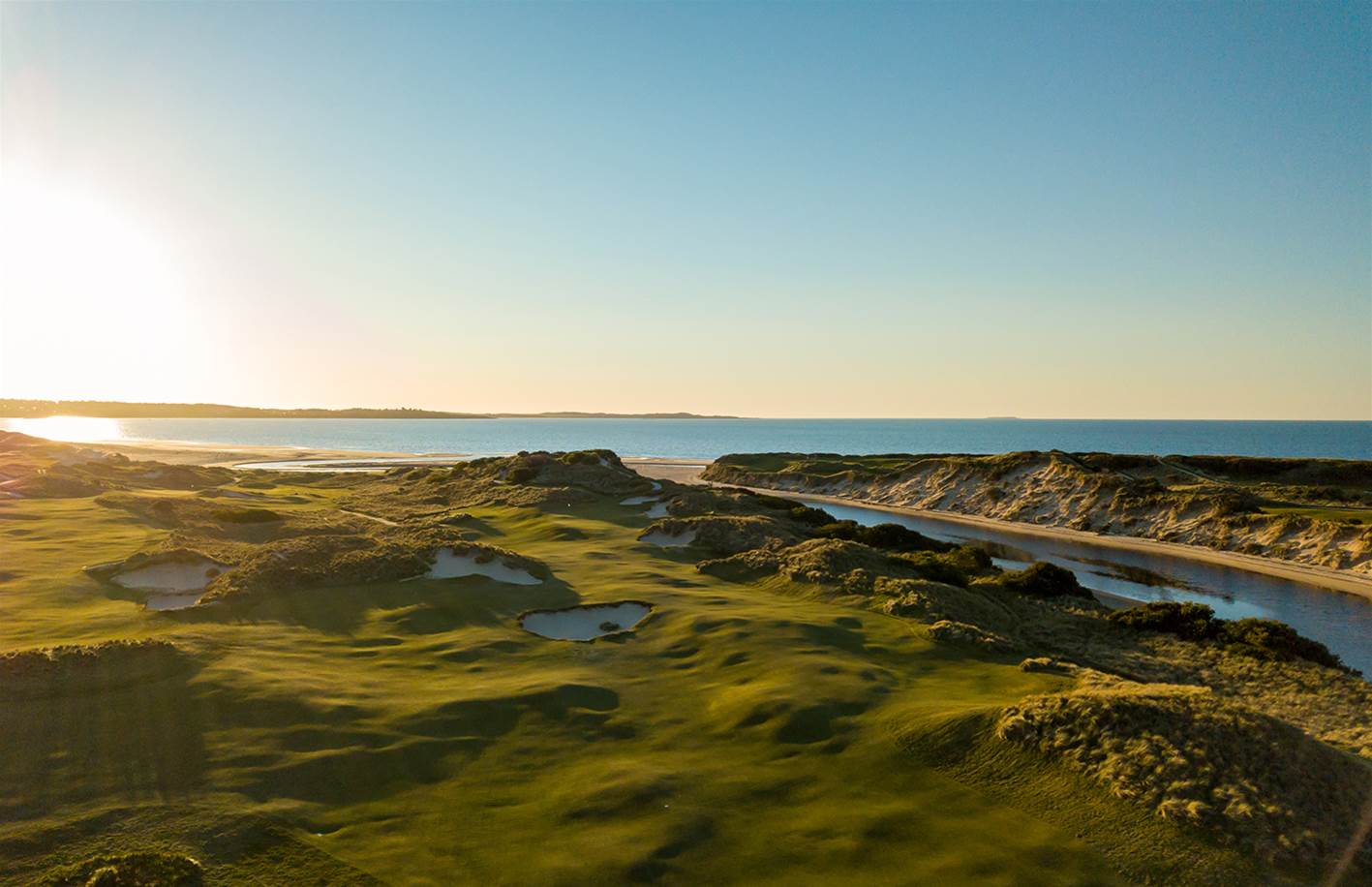
Located near the seaside town of Bridport, about 70 minutes’ drive north east of Launceston, Barnbougle Dunes was designed by acclaimed American architect Tom Doak in collaboration with Mike Clayton. It is a brilliant layout that encapsulates all that is fun and challenging about links golf.
No golfer who tees it up at Barnbougle Dunes should go home without playing Lost Farm or Bougle Run.
Lost Farm opened in 2010 and is the perfect complement to the Dunes layout.
While both offer their own spectacular golfing attributes and visually striking memories, a poll of golfers who have played both would probably find the votes almost split down the middle as to which course was their favourite.
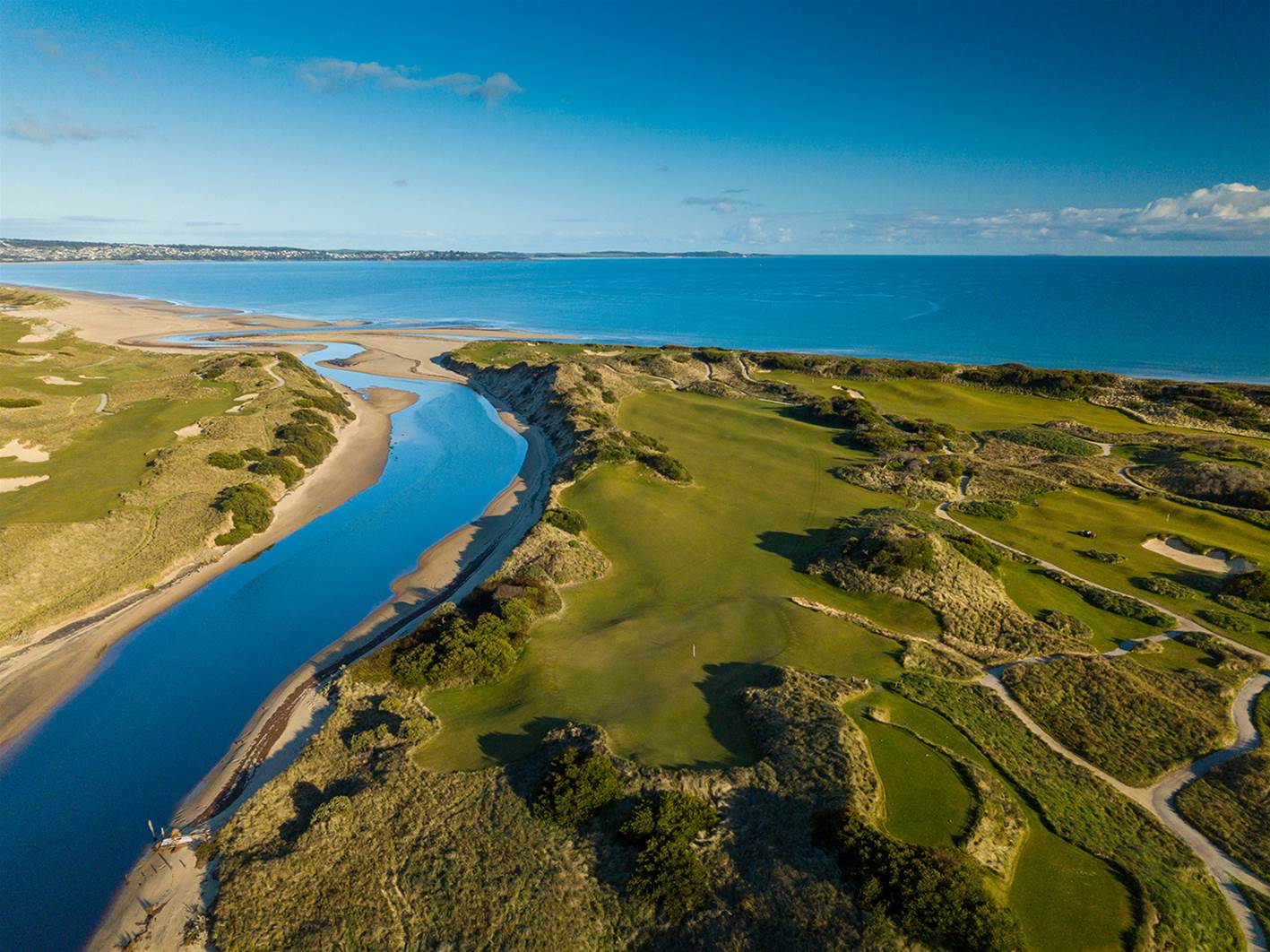
Where Dunes offers one visually dramatic hole after another, the Bill Coore-designed Lost Farm combines the spectacular with holes that place the highest possible value on good strategy and shot execution from tee-to-green.
Lost Farm’s quality has been vindicated many times in its short history with high rankings here and abroad.
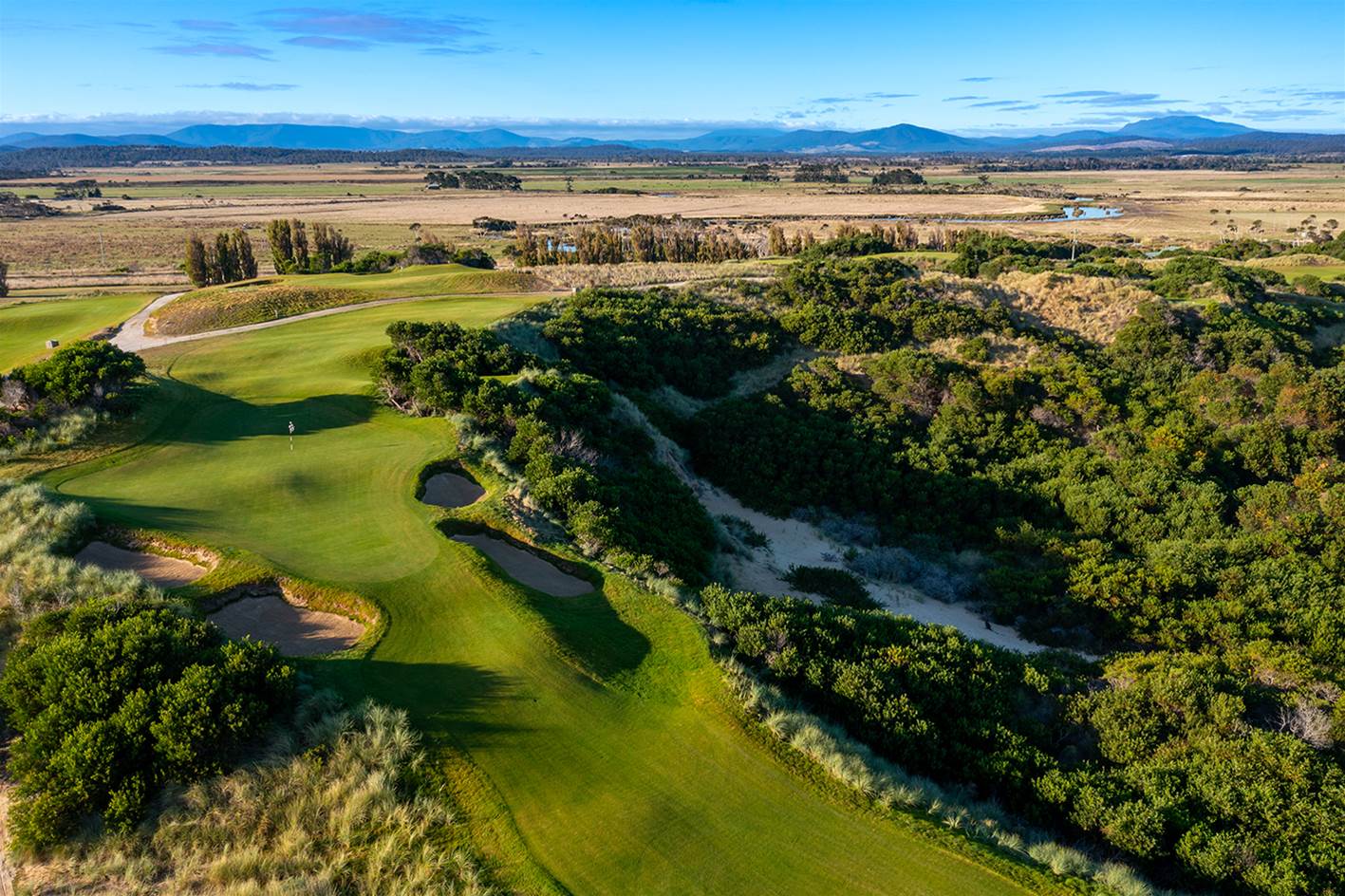
Bougle Run is a spectacular 14-hole short course created by Coore with two par-4s and 12 par-3s laid out across dramatic sand dunes. It is a perfect fit for its surrounds, with wildly interesting greens and deep bunkers providing plenty of challenges and heaps of fun.
3. FOOD, GLORIOUS, FOOD
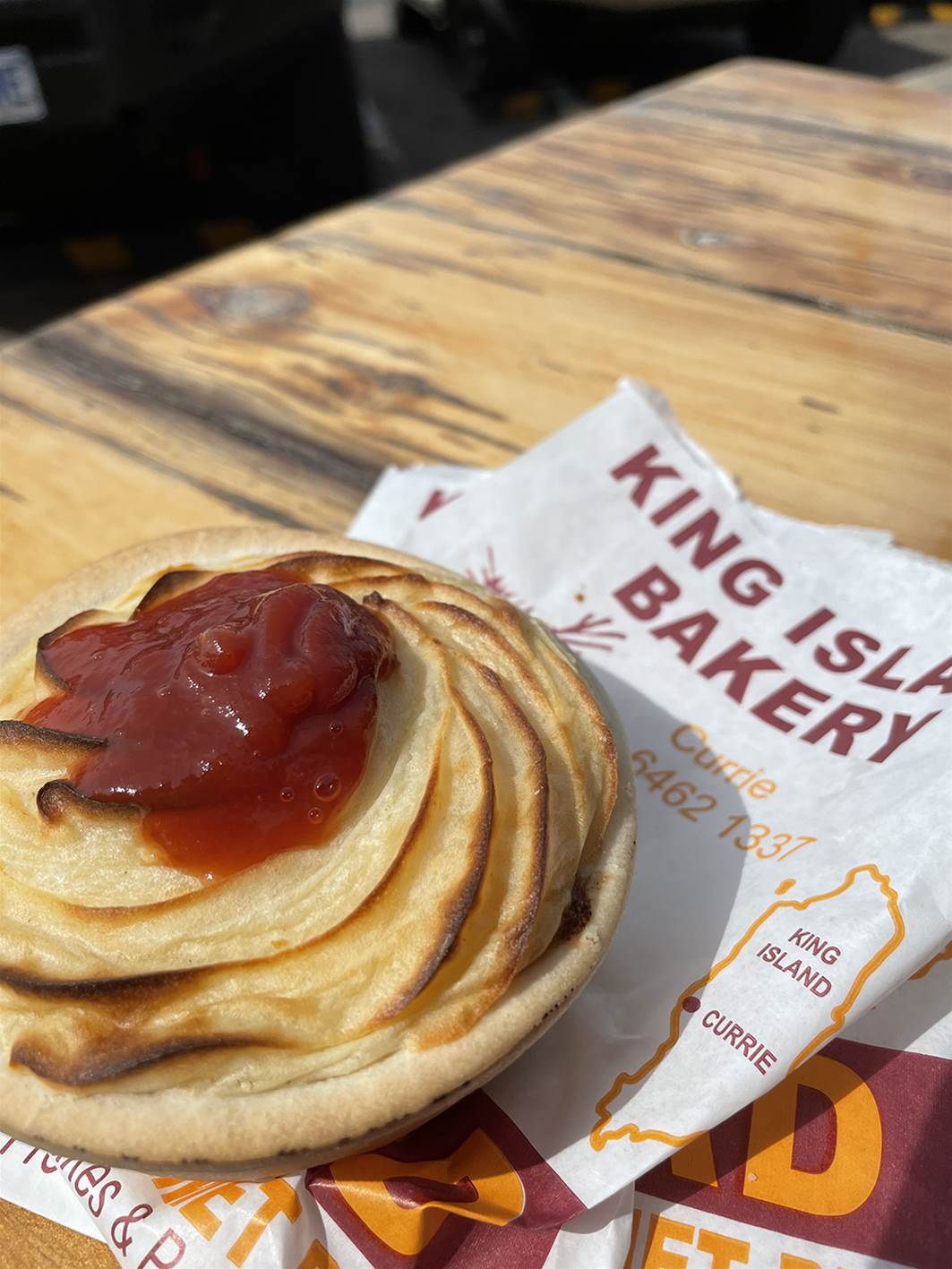 Tasmania has established a widely held reputation for its fine food, using high quality fresh produce created from its rich soil, pure air and clean waters.
Tasmania has established a widely held reputation for its fine food, using high quality fresh produce created from its rich soil, pure air and clean waters.
Awesome seafood, like its renowned scallops and lobsters, to succulent oysters are a must try for any visitor to Tasmania.
Any golfer heading to Barnbougle or King Island should do their tastebuds a favour and visit the local bakery.
Bridport’s Sugar and Spice bakery, about five minutes’ drive from Barnbougle, is outstanding with great hand-made pies and a selection of pastry favourites. Likewise, the King Island Bakehouse, in the main street of Currie, is legendary for its cakes and pies (especially its lobster pies) made fresh on the premises every day. Choosing between a pie or irresistible cream bun or chocolate éclair might be a harder decision than any club selection out on the course.
4. GO BY SEA
Tasmania has never been easier, or more comfortable, to get to. While most will fly to Tassie, you can also drive your car onto the Spirit of Tasmania in Melbourne and sit back and relax for a cruise across Bass Strait.
Both ships were fully refurbished a few years ago with all passenger decks, including accommodation cabins, being remodelled.
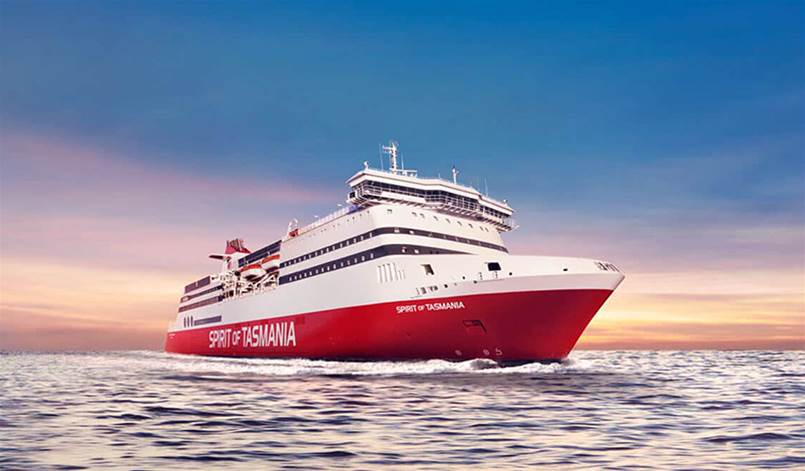 There are three bars and a restaurant area as well as luxurious additions including two cinemas and a lounge area with comfortable recliners, equipped with individual reading lights, tray table and USB port.
There are three bars and a restaurant area as well as luxurious additions including two cinemas and a lounge area with comfortable recliners, equipped with individual reading lights, tray table and USB port.
5. DEVONPORT WELCOME
If you venture to the Apple Isle via the Spirit of Tasmania, you can be on the 1st tee of a very good 18-hole layout within 15 minutes of disembarking in Devonport.
Devonport Country Club has hosted more than a dozen Tasmanian Open Championships, with winners including great names like Geoff Ogilvy, Bill Dunk, Ian Stanley and Bob Stanton.
Designed by Vern Morcom and opened for play in 1961, Devonport is laid out on gently rolling, easy-walking terrain on a peninsula leading to the banks of the Mersey River.
This is a traditional bushland course, so trees tightly flank many of the fairways, making birdies hard to come by. With most greens elevated slightly with steep slopes of each side, chipping and putting can also be tricky.
6. ULVERSTONE, OH, ULVERSTONE
Heading west of Devonport along the coast, the driving is easy and there are several good golf courses to sample.
Ulverstone Golf Club is a hidden gem about 30 minutes’ drive west of Devonport and can be a little tricky to locate in the hills away from the town centre, so make sure you follow the signs.
Designed by Al Howard, Ulverstone is a wonderfully undulating course that easily sits among Tasmania’s best and is perhaps the reason why it has hosted several state and national championships.
While you might read about other courses having fairways that are “heavily tree-lined”, none come close to Ulverstone for shear majesty in the size and number of trees that abound across the layout. This is hardly surprising considering the par-72 is surrounded by thick Tasmanian forest.
7. THE LAUNCESTON FOUR
The majority of interstate or overseas golf travelers en route to Barnbougle will fly into Launceston – Tasmania’s second largest city, behind the capital Hobart. It should come as no surprise then that this city of nearly 110,000 people also boasts four fine courses, all within a 15 minutes’ drive of the city centre.
Riverside Golf Club, just off the West Tamar Highway, is well regarded for the quality of its greens, while on the eastern side of the Tamar River, you will find Mowbray Golf Club, a layout covering far more dramatic topography that gives rise to some interesting holes and nice views of the city and the picturesque Tamar Valley.
Launceston Golf Club – located at Kings Meadow about halfway between the city and the airport – is the second oldest 18-hole layout in Tasmania and the fifth oldest in Australia having been established in 1899.
Launceston has some very good holes but arguably the most memorable is the par-3 13th, known as ‘Spine Cop’. At 157 metres from the championship pegs, it’s not length that provides its main defence, but it is the large wasteland in front of the green and the bunkers either side of the putting surface that will penalise the mis-hit tee shot.
Bunkers are also a memorable feature of the Country Club Tasmania course, 15 minutes’ drive south of Launceston via the Bass Highway.
The Peter Thomson and Mike Wolveridge-designed course, which opened for play in 1982, features gum trees and pines lining relatively wide fairways. There are several water hazards and a significant number of bunkers scattered across the course.
8. STEP BACK IN TIME
Once you start travelling to different golf courses throughout Tasmania, there is a name you will see with great regularity adorning honour boards far and wide.
The name Toogood, or more precisely, the Toogood family (of father Alf, and sons Peter and John) has had an enormous influence on the game in Tasmania – as players, teachers and course designers.
 But perhaps the biggest ongoing contribution has come from Peter Toogood, who was instrumental in the foundation of the Australasian Golf Museum, ideally located at Bothwell – home of Australia's first known golf course – a scenic 50-minute drive north of Hobart in the beautiful Clyde River valley.
But perhaps the biggest ongoing contribution has come from Peter Toogood, who was instrumental in the foundation of the Australasian Golf Museum, ideally located at Bothwell – home of Australia's first known golf course – a scenic 50-minute drive north of Hobart in the beautiful Clyde River valley.
Housed in a heritage-listed schoolhouse, the museum is a must for any golf fan with interesting equipment exhibits – some dating back to the 1800s – photographs and paintings as well as donated equipment from some of our best players including Peter Thomson, Ian Baker-Finch, Mat Goggin, Graham Marsh and, of course, Peter Toogood.
9. GOLFING ROOTS
One of the most important things you will see at the Australasian Golf Museum is how the game was first introduced to Australia – on a property known as ‘Ratho’, just a few minutes’ drive out of Bothwell.
Scottish emigrant Alexander Reid played on Ratho Farm with featheries in the 1820s and three generations of Reids followed in their enjoyment of the course.
The great-grandfather of Greg Ramsay, who played a major role in the formation of Barnbougle Dunes, purchased Ratho in 1936 and in recent years Ramsay worked hard to restore the course to its true origins. He’s done a great job and a round at Ratho Golf Links is a memorable today because it is as if time has stopped and dropped you back in the 1800s.
Adding to the Ratho experience is staying on the farm. The accommodation consists of several old farm buildings, which have been beautifully restored into luxury boutique rooms.
Each room is equipped with modern features but still retain interesting elements of the original masonry and carpentry. It is bed and breakfast farm stay accommodation with a difference.
10. SINGLE MALTS
Perhaps the only industry in Tasmania that could rival the growth of golf tourism in the past two decades is the whisky industry.
For those golfers looking for links with the Home of Golf, look no further than playing a round of golf in the morning and sampling some single malt whiskies in the afternoon at one of the many distilleries now scattered around Tassie.

One of the finest single malts to be found in Tassie comes from the Nant Distillery – a few minutes’ drive from Ratho Farm just outside Bothwell. The Nant Estate dates back to 1821 and has been a commercial distillery since 2008 and, more recently, home to Australia’s only Highland Single Malt whisky. If whisky is not your drop you might, however, enjoy the Nant Whisky BBQ Sauce … delicious!!
11. HIDDEN GEMS
The majority of Tasmania’s golf courses are nine-hole layouts and there are some real hidden gems among them. Many of these smaller courses survive on the back of volunteer assistance, while a round might call for your green fee to be dropped in an honesty box at the clubhouse.
There are some ‘hidden’ nine-holers worthy of discovery and within an easy drive of Hobart. Tasman Golf Course is near Port Arthur with the most memorable hole being ‘Cameron’s Chasm’ – the 124-metre uphill par-3 8th played from one cliff top to another with spectacular views towards Tasman National Park.
The Llanherne links shares a boundary with Hobart’s airport and shares similar terrain as its more famous golfing neighbour, Royal Hobart Golf Club. In crafting the course at Seven Mile Beach, designer Peter Toogood was obviously inspired by his visits to the best of England’s heathland courses and Scotland’s links layouts as he oversaw the creation of Llanherne.

12. TASMANIA NATURALLY
Surrounded on three sides by the waters of Barilla Bay, the course at Tasmania Golf Club was once a thick wilderness of bracken, coastal wattle and other scrub that covered sand dunes and sandstone outcrops. Once the scrub was cleared on Barilla Bluff, a rolling landscape was revealed, giving rise to some unique and interesting holes created by the late Al Howard.
The best-known hole at Tasmania Golf Club is the 528-metre par-5 3rd hole – once described by Jack Nicklaus as one of the most spectacular in Australia. Howard might have been paying homage to the famous 18th hole at Pebble Beach in California when he staked out the routing of this hole. With beautiful views of Barilla Bay and the surrounding countryside, the hole follows the bay in a gradual curve to the left and offers the option for long hitters of shortening the hole by smashing their drive over the corner. The hole has been made even better in recent times with the removal of trees separating the left edge of the fairway from the water, which reveals the green to the player standing on the tee
While the undulating terrain and the natural holes laid across it is the outstanding feature at Tasmania Golf Club, the nicely manicured bentgrass playing surfaces really add to the memorable golfing experience here.
13. ROYAL SUITE
Royal Hobart Golf Club has been in existence for 125 years but the expansion of Hobart forced it from the eastern shore of the Derwent River and off to Seven Mile Beach in 1956.
Vern Morcom – whose experience as course superintendent at Kingston Heath for nearly 40 years and his design work on other courses in the Melbourne Sandbelt – was then commissioned to create a new layout, which would famously host the Australian Open, won by Jack Nicklaus, 15 years later.
There is no mistaking Morcom’s touch, with its fairways laid out over slightly undulating sandy land and fairways lined with tall gum trees mixed with thick native shrubs and some pine trees. This not only creates a sense of isolation on many holes but the challenge is to keep your ball on the fairway and out of trouble.
14. WORLD CLASS COMING
The future for golf in Tasmania is exciting. The development of Barnbougle Dunes, Lost Farm, and the recently opened Bougle Run, as well as the King Island courses – Cape Wickham and Ocean Dunes – has put Tasmania on the radar of golf travelers across the globe.
And there are plans to add to this crop of world- class layouts.
Construction has started on Arm End, which is located 40 minutes’ drive, and 20 minutes by ferry, from Hobart’s CBD.

Arm End is a visually spectacular and dynamic landform surrounded by water with five separate beaches, several kilometres of cliffs and dramatic topography, which will has provided a blank canvas for the design team of Neil Crafter and Paul Mogford (Golf Strategies).
Crafter and Mogford have developed the masterplan for a links style course, which will be the centerpiece of a multi-use public reserve open to bike riding, walking, swimming and fishing.
Former Tour player and proud Tasmanian, Mat Goggin, is behind another development at Seven Mile Beach, near Royal Hobart.
Work has begun on clearing the sandy site of non-native pines and scrub to allow the Clayton, DeVries and Pont design company to fine tune the design of what promises to be another Tasmanian wonder course.
– This article was sponsored by Tourism Tasmania. To find out more about Tasmania, visit the website www.discovertasmania.com.au
Related Articles

Drinks With... Ricky Ponting
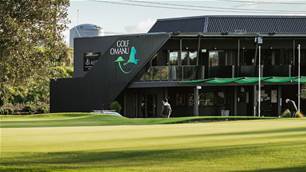
International Spotlight: Omanu Golf Club
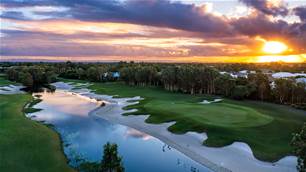
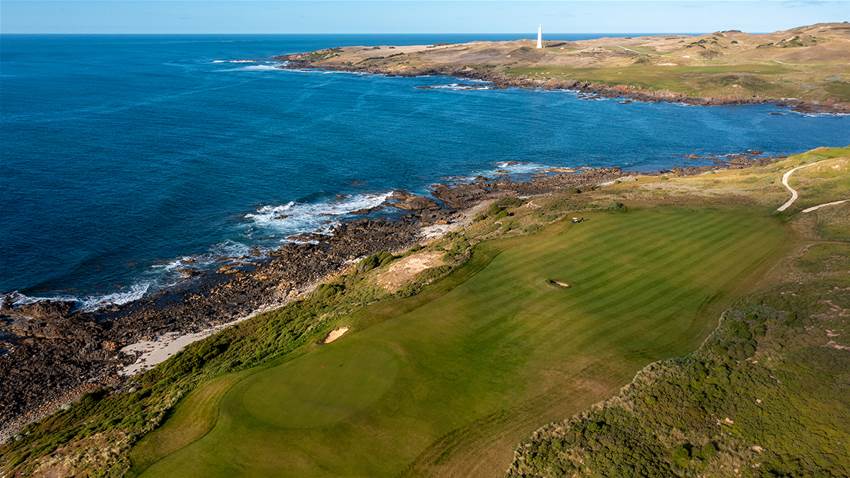




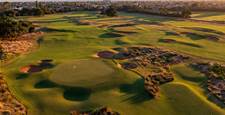

_15th_hole.jpg&h=115&w=225&c=1&s=1)




